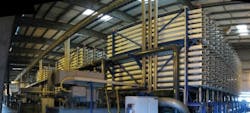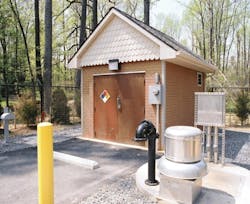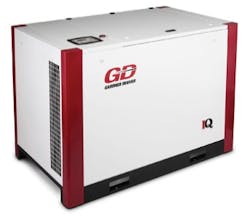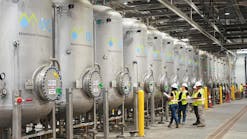Faster response time from MTU Onsite Energy generator sets, plus improved reliability and reduced maintenance, make it more cost-efficient to install new systems than to upgrade existing units at Fairfax County's wastewater system. Photo credit: Fairfax County.
The Wastewater Collection Division's Pumping Stations Branch operates and maintains the wastewater pump stations, flow meters, a pressure sewer system and several facilities that add chemicals to control odor and corrosion. Unmanned and completely automated, each of the Fairfax County pump stations requires a standby power source that automatically comes online to keep the pumps running and wastewater flowing through the collection system when utility power is lost.
Recently, Cynergy Electric Company, an electrical contractor in Crofton, MD, completed a yearlong project for Alpha Construction Co., Upper Marlboro, MD, to replace old backup power systems at three of the pumping stations. The original contract called only for upgrades and repairs of the existing standby generators at the three pumping stations. But after completing a cost-benefit analysis, officials at Alpha recommended replacing the existing generators instead of upgrading the old ones. The benefits of improved response time, reliability and reduced maintenance outweighed the additional investment for the new units.
The 30-year-old compressed-air-start units used low-speed diesel engines compared to new generators that use 1,800 rpm high-speed diesel engines. Low-speed engines are slow to respond to load changes and take a long time to reach operating temperature. When called on to carry loads at the pumping stations, the old units took almost 15 minutes to start and assume load, according to Dave Ashburn, president of Cynergy.
The age of the existing units also made them expensive and difficult to maintain.
"Those units are no longer manufactured, so any replacement parts had to be custom made," said Ashburn.
In addition, the old generators were physically large by today's standards, and their large compressed-air-start systems took up still more of the limited space inside the pumping stations. The old units also lacked any type of emissions control, since they predated EPA emissions standards for that type of equipment.
New Backup System
Given the old age and performance deficiencies of the existing units, Cynergy designed and installed new backup power systems, which included new generators, switchgear, batteries and battery chargers. For the generators, Cynergy turned to Curtis Engine & Equipment Inc., a Baltimore-based distributor for MTU Onsite Energy that supplies emergency standby power systems in the Mid-Atlantic region.
The loads and starting requirements of each pump motor determined the choice of generators. Curtis performed a motor-starting study that indicated the stations needed generators with three different generating capacities: a 1,000 kW unit to power up to four 250 hp motors at one of the stations; a 1,500 kW unit to power up to four 450 hp motors at the second station; and a 1,750 kW generator for up to four 600 hp motors at the third station.
Each of the backup power systems has a 200-gallon day tank that pulls from a 5,000-gallon main fuel tank. That provides enough fuel at full load to power the 1,000 kW unit for 69 hours, the 1,500 kW unit for 48 hours and 1,750 kW unit for 40 hours. But the actual run times at the three stations are much longer, since the power systems usually are not required to operate at full load, according to Paul Koch, Curtis's chief operating officer.





